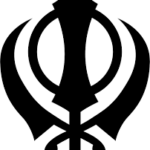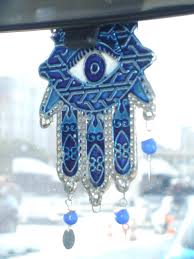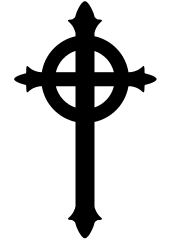
Sikhism symbol
| Symbol | Sikhism |
| Religion | Sikhism |
| Origin | Sikhism originated in the Punjab region of the Indian subcontinent in the late 15th century. |
| Meaning | The primary symbol of Sikhism is the Khanda, which represents the concepts of oneness, equality, justice, and the balance between temporal and spiritual responsibilities. |
| Appearance | The Khanda symbol consists of several components, including a double-edged sword (khanda), a circle (chakra), two crossed kirpans (ceremonial swords), and sometimes a central khanda symbol. |
| Colors | The Khanda symbol is often depicted in black or blue, although it may appear in various colors depending on its context and artistic representation. |
| Usage | The Khanda symbol is prominently featured in Sikh places of worship (Gurdwaras), on the Sikh flag (Nishan Sahib), and in various Sikh religious texts and artifacts. |
| History | The Khanda symbol has been central to Sikh identity and symbolism since the inception of the religion by Guru Nanak Dev Ji in the 15th century. It has evolved over time but remains a fundamental emblem of Sikhism. |
| Popularity | The Khanda symbol holds immense significance for Sikhs worldwide and is widely recognized as a representation of Sikh identity and values. |
| Importance | The Khanda symbolizes key principles of Sikhism, including unity, justice, and the struggle against injustice. It serves as a reminder of the Sikh commitment to righteousness and selfless service. |
| Complexity | While the Khanda symbol appears simple at first glance, its components carry deep philosophical and spiritual meanings, reflecting the multifaceted nature of Sikh beliefs and practices. |
| Emotions | The Khanda symbol evokes feelings of pride, solidarity, and spiritual devotion among Sikhs, serving as a powerful emblem of their faith and heritage. |
The Khanda, also known as the Sikh symbol, is a powerful emblem representing the core tenets of the Sikh faith. It’s not just a symbol; it’s a narrative etched in steel and spirit.
Central to the Khanda is the double-edged sword, representing Miri and Piri, the duality of spiritual and temporal authority. Sikhs strive for inner enlightenment while actively engaging in their social and civic duties. The sword embodies both courage and righteousness, reminding Sikhs to uphold justice and defend the downtrodden.
Surrounding the sword is the Chakar, a circular disc. It signifies God’s oneness and eternity, the indivisible nature of creation. It emphasizes the unity of all faiths and the interconnectedness of the universe.
Two Kirpans, curved ceremonial swords, flank the Chakar. They represent Raj Karega Khalsa, the Khalsa’s (Sikh community’s) sovereign identity and responsibility to uphold righteous rule. They also symbolize self-defense and the protection of the innocent.
The Khanda is more than just an image; it’s a call to action. It reminds Sikhs to live with integrity, courage, compassion, and a commitment to both spiritual growth and social justice. It’s a beacon of hope and a reminder of the responsibility we all share to create a more just and equitable world.
View rest of the Sikhism Symbols, Religious Symbols
-
444 angel number
-
333 angel number
-
222 Angel Number
-
Christianity
-
Catholic Fish
-
Hamsa Hand
-
Jesus Cross
-
Presbyterian
-
Judgement








